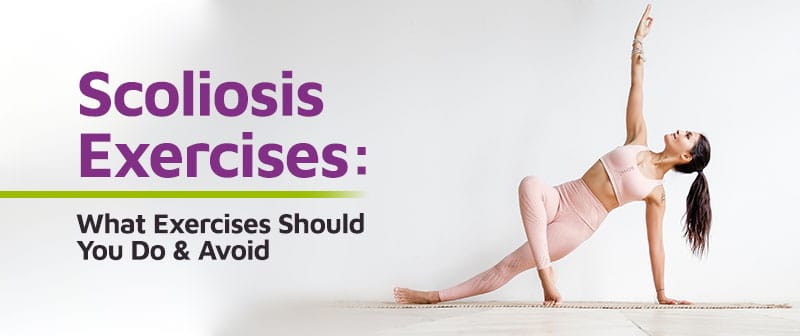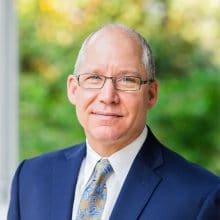
General exercise can improve a patient’s overall health, but can’t impact scoliosis on a structural level; scoliosis-specific exercises (SSEs) have corrective potential, especially when combined with other effective scoliosis-specific treatment disciplines prescribed by a CLEAR-certified scoliosis chiropractor. While the prescription of SSEs will vary based on important patient and condition characteristics, as well as the favored exercise program, some common SSEs include:
There was a time when the place of exercise in scoliosis treatment was questioned, but we now know that when used appropriately, scoliosis-specific exercises can help treat the condition on a structural level. Let’s start our exploration of scoliosis exercises with a brief discussion on the merits of proactive treatment.
Scoliosis is often described as a complex condition, and this is partially because there are different types of the condition that can develop, but also because scoliosis is a highly-variable condition ranging from mild to moderate and severe.
No two cases of scoliosis are the same and necessitate the crafting of customized treatment plans that address important patient and condition characteristics.
Scoliosis is also progressive, meaning it’s in its very nature to worsen over time, especially if left untreated, or not treated proactively, but what exactly does proactive mean in the context of scoliosis treatment?
This is important to understand because a proactive scoliosis treatment approach is not the same as the traditional approach to scoliosis treatment, and offers patients very different potential outcomes.
While treatment results can never be guaranteed, early detection increases chances of treatment success, but only if proactive treatment is applied. When proactive treatment is applied as close to the time of diagnosis as possible, there are fewer limits to what we can achieve.
Here at the CLEAR Scoliosis Institute, we follow a conservartive chiropractic-centered approach: one that combines multiple scoliosis-specific treatment disciplines for the best results.
Being proactive is particularly important when it comes to treating progressive conditions like scoliosis because staying ahead of its natural tendency to worsen is a cornerstone of treatment efficacy.
Starting treatment early, while a curvature is still small, is less complex, means treating the spine while it is still flexible, and before the body has had time to adjust to its presence.
In order to impact the condition on multiple levels, we combine different scoliosis-specific treatment disciplines including physical-therapy exercises, chiropractic adjustments, and balance-training exercises.
As scoliosis-specific exercises are an important component of CLEAR treatment, let's move onto the role of scoliosis exercises in effective treatment plans.
Physical therapy is an exercise-based approach to restoring and improving mobility. As mentioned, scoliosis is a highly-variable condition with each patient experiencing their own condition type, severity level, curvature pattern, curvature location, and unique condition-related symptoms.
While not every patient with scoliosis will experience mobility limitations, it’s important to maintain as much flexibility in the spine and its surrounding muscles as possible; the spine’s surrounding muscles play an important role in providing it with optimal support and stabilization.
When scoliosis-specific exercises are applied as part of scoliosis treatment, studies have shown that they have corrective potential and can impact conditions on a structural level; however, it’s important to understand that reducing an abnormal spinal curvature on a structural level is beyond the scope of general exercises and physical therapy and requires a scoliosis-specific approach.
Here at CLEAR, we value the place of SSEs in different phases of treatment.
Our CLEAR scoliosis treatment protocols start with a comprehensive physical exam and a series of X-rays. Through these results, we are able to design a fully-customized treatment plan moving forward.
SSEs play a role in different stages of treatment from helping prepare the body for treatment (making it more responsive) to influencing posture and the brain-body connection.
While every case is different with its own unique treatment needs, our treatment sessions generally consist of 3 phases: Mix, Fix, and Set.
During the first phase, we work towards preparing the body for treatment. This includes warm-up exercises, massage, and a variety of other therapies designed to relax the spine and its surrounding muscles.

Fix, the second phase of treatment, involves scoliosis-specific chiropractic care that relies on advanced mechanical adjusting instruments for delivering precise corrections. Adjustments are not just performed on the back, but also the hips and other related areas.
The third and final phase of treatment involves the use of SSEs to influence posture, coordination, and balance. The specialized exercises are designed to activate certain muscle groups close to the spine to provide it with better support and stabilization.
As the brain and spine work in tandem to form the body’s central nervous system (CNS), scoliosis can interfere with the passing of messages between the brain, spine, and the rest of the body, impacting the brain-body connection; these exercises also target certain areas of the brain to improve that connection and achieve a more balanced and natural body-position.
As you can see, the types of exercises we are using here at CLEAR target very-specific areas of the body for highly-specific results, which is why a scoliosis-specific chiropractor is needed to deliver these types of results, and is also why the CLEAR certification process requires advanced and specialized training.
Scoliosis-Specific Exercise Programs
There are many different types of scoliosis-specific physical therapy programs that use exercises to treat the condition. While there are too many to explore in depth currently, the following are worthy of some additional time and exploration: the Schroth Method, SEAS (Scientific Exercise Approach to Scoliosis), LYON Method, FITS (Functional Individual Treatment for Scoliosis), and more.
If you are wanting to follow a proactive treatment approach, like what we offer patients of the CLEAR Scoliosis Institute, scoliosis-specific exercises will be integrated into the design of comprehensive and customized treatment plans that work towards achieving very-specific corrective results and providing the spine with optimal support and stabilization.
Each patient will have their own specific SSEs to do in office and at home to augment and sustain treatment results, including follow-up care and monitoring.

There is a big difference between doing general exercises for condition-related pain relief/general reasons, and doing scoliosis-specific exercises as part of a comprehensive treatment plan.
The answer to the question of which exercises should be done, and which to avoid, will vary based on the desired results, the treatment plan, and is condition-specific.
If a person with scoliosis is looking for general exercises for general reasons, stretches and a variety of exercises can help maintain overall health and fitness, but don’t have the potential of impacting the condition on a structural level.
In general, exercises that should be avoided by scoliosis patients are those that strain the back, overuse one side of the body (playing into the condition’s asymmetrical effects), involve spinal extension, and/or involve repeated jarring motions that can further compress the spine.
For those wanting to use scoliosis exercises for corrective results, meaning reducing their abnormal spinal curvatures on a structural level, scoliosis-specific exercises prescribed by a scoliosis chiropractor can become an important part of treatment efficacy, but recommended exercises will vary from one patient to the next.
It’s important to understand that just as there is no one-size-fits-all treatment plan for scoliosis, there is no generic exercise program for scoliosis patients. As mentioned throughout the article, scoliosis is a highly-variable condition, with each case producing its own unique set of symptoms, characteristics, and treatment needs.
Part of the benefits of seeking treatment here at the CLEAR Scoliosis Institute is that our team of scoliosis chiropractors are trained and certified in multiple scoliosis-specific treatment modalities, including a variety of physical therapy programs that utilize different scoliosis-specific exercises.
When integrated into a proactive and customized treatment plan, scoliosis-specific exercises have the potential to reduce the abnormal spinal curvature, help strengthen the spine and its surrounding muscles, improve posture, and the brain-body connection.

CLEAR provides a unique and innovative way of understanding scoliosis. Sign up to receive facts and information you won’t find anywhere else.

This is really helpful! I really like reading this type of blog content. I keep on learning everyday, thank you for creating such a helpful content.
Good morning Dr Hartley
I am a 68 year old man who has been diagnosed with lumbar scoliosis and degenerative disc issues. I have pain in the low back/upper thighs, and the surgeon I visited said that the corrective surgery is something he would not advise to his own father, as it involves 10 hrs of surgery and a 20% complication rate, and one year to fully reecover. What can be done for me to alleviate the condition, where I am an active older man
who still scuba dives, gardens and cuts trees for firewood, etc.
I am very disappointed by my condition, to say the least.
Hi and thank you for your question. Your surgeon is absolutely correct. It is a very difficult surgery to have done after the age of 50 because it is very taxing on the body. The symptoms you're feeling into the legs and thighs are typically the result of the discs in the lumbar spine. The discs get affected because of the scoliosis. It's like a tire on a car that’s not balanced, it will wear faster and cause more damage. Essentially, this is what's happening to the discs in your spine. My best advice to you is find a CLEAR Scoliosis Specialist. They are trained in your specific condition and should be able to better advise you and better guide you. In our office, we generally evaluate you to determine appropriate treatment and then figure out what's going to give you the best quality of life. Sounds like you were pretty active previously, so the goal would be to figure out how to get you to be able to do the things you want to do. If you have any additional questions, feel free to ask. Have a great day.